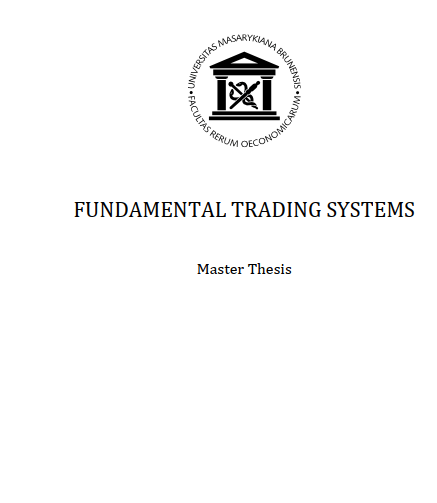Fundamental trading systems [PDF] walks you through the key elements of building and testing trading systems, including the role of backtesting, screening, and ranking. You’ll learn how single-factor and multi-factor models are developed, how they perform under different market conditions, and how advanced ranking can enhance results.
Introduction
If you are searching for a practical guide to structured investing, this Fundamental trading systems PDF will give you a solid starting point. Unlike purely technical models, fundamental systems rely on measurable financial data such as earnings, cash flow, valuation ratios, and balance sheet strength. By combining these factors into rule-based strategies, investors can create consistent methods for stock selection while reducing the influence of emotions and market noise.
This ebook walks you through the key elements of building and testing trading systems, including the role of backtesting, screening, and ranking. You’ll learn how single-factor and multi-factor models are developed, how they perform under different market conditions, and how advanced ranking can enhance results. Real-world examples and historical case studies are provided to help you understand not only the theory but also the application of these strategies.
Designed for both aspiring traders and experienced investors, this Fundamental trading systems PDF focuses on practicality. Every system presented can be adapted to real markets without requiring advanced software or excessive complexity. Whether your goal is to improve portfolio performance or to build a disciplined investment process, this resource will equip you with actionable tools to approach trading with confidence and structure.
Excerpts
The goal of the submitted thesis named “Fundamental Trading Systems” is a
research of fundamental factors and development of fundamental trading
strategies. The first part deals with defining parts of the fundamental trading
systems and methodology. The second part describes research of several
fundamental criteria and their behavior in time. The third part focuses on the
development of fundamental trading systems and their optimization. The fourth
part is dedicated to the combination of advanced ranking and screening and its
impact on the systems’ performance. The final part concludes.
Fundamental trading systems represent a field that is both over-researched and
under-researched. The over-research refers to a wide body of literature that was
published in the past several decades which focuses on the behavior of stocks of
companies with different values of certain fundamental criteria. The works quoted
in this thesis represent only a negligible fraction of the research already dedicated
to the study of the performance of fundamental factors.
Yet, not many researchers put together different pieces of knowledge stemming
from the findings to create a complete system. The lack or a mere nonexistence of
complete fundamental systems is the aforementioned under-research. Why if
certain anomalies have been discovered, they are not exploited to create moneymaking strategies?
The other side of the problem is that the research is actually conducted but not
published. It is widely known what high-frequency trading does and how it works,
but no HFT systems are publicly available because of the amount of research that
went into it and their ability to make money. The same applies to FTS. These
systems, as will be shown, are executable and do not require powerful
supercomputers in order to run. But not many people have access to quality
fundamental data and long enough data series to conduct thorough research on
their own. Institutions researching FTS will rather use the strategies to trade them
since after publishing, many of such strategies stop working because too many
market participants trying to exploit one strategy will cause it to stop working.
This thesis aims to shed light into the under-researched area of fundamental
trading systems and offer a peak into the performance of these strategies and each
specific factor they are composed of.
The primary goal of this thesis is to develop and backtest FTS. Furthermore, there
are three sub-goals leading to the fulfillment of the overall goal: backtesting of onefactor and two-factor screens, backtesting of screening and certain factors to
increase alpha, and backtesting of ranking on the performance of strategies.
The first part of the thesis will define necessary parts of the FTS, provide
discussion of advantages and disadvantages of FTS, and most importantly, explain
methodology used to develop these FTS. The second part will provide the most
important input for the FTS. One-factor and-two factor strategies (screens) will be
tested in order to discover the best ones based on their performance and other
metrics. The third part will be the most crucial one. Backtests of several strategies will be described together with their complete characteristics. One dividend, three
value, and four own strategies, respectively, will be presented.
In the fourth part, all strategies presented in the third part will be combined with
advanced ranking to find the influence of ranking on the return of strategies using
only screening. The final part will conclude.
Previous academic research has discovered factors that worked well and those
that did not. It is expected that the tests in this thesis will confirm the previous
findings. Building on such findings, strategies built on these well-performing
factors are expected to exhibit market-beating results. In order to de-randomize
the outcomes and stocks selection process, simple and advanced rankings will be
used. It is expected that simple ranking will improve the returns to strategies that
do not use ranking and that advanced ranking will help push the boundaries of
performance of these strategies further.
